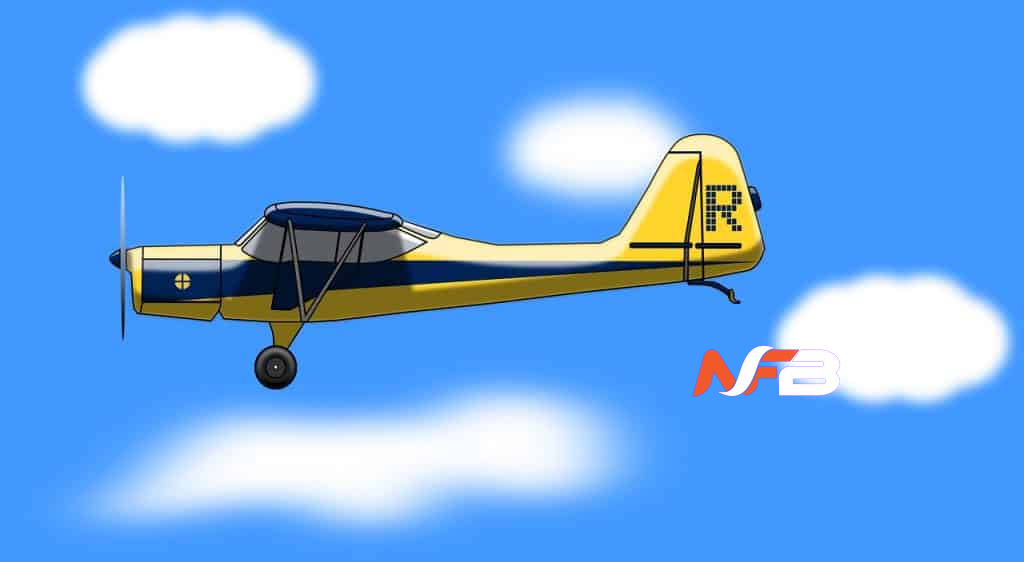The magic of flight has captivated humanity for centuries, and for RC enthusiasts, understanding flight dynamics transforms a simple hobby into a deeply rewarding technical pursuit. Flight dynamics encompasses the forces and principles that keep aircraft airborne, explaining everything from smooth takeoffs to precise maneuvers. For beginners entering the world of radio-controlled aviation, grasping these concepts isn’t just academic—it directly impacts your ability to fly confidently and handle unexpected situations in the air.
Many newcomers rush to the flying field without understanding why their aircraft behaves certain ways, leading to crashes, frustration, and unnecessary expenses. A solid foundation in flight dynamics helps you anticipate how your plane will respond to control inputs, choose the right aircraft for your skill level, and troubleshoot problems before they become disasters. This knowledge empowers you to progress faster and enjoy more successful flights from the start.
This guide focuses on practical aspects of flight dynamics that matter most to RC beginners, including real-world examples and essential information about maintaining your aircraft through proper parts management. You’ll learn not just the theory, but how to apply these principles to become a more capable and confident pilot.
1. The Basics of Flight Dynamics
Flight dynamics revolves around four fundamental forces that act on every aircraft: lift, drag, thrust, and weight. Understanding how these forces interact is essential for controlling your RC plane effectively. Lift is the upward force generated by air flowing over the wings, counteracting the downward pull of weight (gravity). For flight to occur, lift must equal or exceed weight. Thrust, produced by the propeller or motor, moves the aircraft forward and must overcome drag—the resistance created by air friction against the plane’s surfaces.
These forces exist in constant balance during flight. When you increase throttle, thrust increases and the plane accelerates or climbs. As speed builds, more air flows over the wings, generating additional lift. However, higher speeds also create more drag, which is why aircraft reach terminal velocities. During level flight, all four forces achieve equilibrium: lift balances weight, and thrust balances drag. When you bank or turn your RC plane, you’re deliberately disrupting this balance to change direction.
For beginners, recognizing this force interaction explains common flight behaviors. If your plane struggles to climb, insufficient thrust or excessive weight may be the culprit. A nose-heavy aircraft requires more lift (and thus more speed) to stay airborne, while a tail-heavy plane becomes unstable. By understanding these relationships, you can diagnose problems, adjust your flying technique, and make informed decisions about aircraft setup and trim adjustments that directly improve flight performance.
2. High-Wing Design Benefits
High-wing aircraft, where the wing attaches to the top of the fuselage, offer distinct advantages that make them ideal for RC beginners learning flight dynamics. The elevated wing position creates inherent stability through a pendulum effect—the fuselage hangs below the wing like a weight beneath a suspension point. When the aircraft tilts, gravity naturally pulls the fuselage back to center, automatically correcting minor disturbances without pilot input. This self-stabilizing characteristic gives new pilots extra reaction time and reduces the constant control adjustments required with other configurations.
Visibility represents another crucial benefit for beginners. With the wing mounted high, you maintain a clear view of the fuselage and ground below during flight, making orientation easier to judge. When your plane is distant or backlit by the sun, recognizing whether it’s flying toward or away from you becomes simpler. This visual clarity proves invaluable during landing approaches, where judging altitude and descent rate determines success or failure. High-wing designs also protect the fuselage during rough landings, as the wing absorbs initial impact rather than delicate components underneath.
Assembly and maintenance considerations further favor high-wing models for newcomers. The straightforward wing attachment typically involves rubber bands or simple bolts, allowing quick field repairs if needed. Ground handling becomes less problematic since the propeller sits higher, reducing the risk of striking grass or debris during taxi. The accessible fuselage makes battery changes and component inspections easier compared to low-wing designs where the wing obstructs access. These practical advantages let beginners focus on developing flying skills rather than wrestling with complicated mechanical challenges.
3. Flight Management System (FMS) Support
Flight Management Systems in RC aviation refer to electronic stabilization and assistance technologies that help pilots maintain control and execute maneuvers more precisely. Modern FMS components include gyroscopes, accelerometers, and flight controllers that continuously monitor aircraft attitude and make micro-adjustments to control surfaces. For beginners, FMS technology acts as a safety net, preventing over-correction and reducing the likelihood of loss-of-control situations that lead to crashes. These systems don’t fly the plane for you, but rather smooth out your inputs and compensate for environmental factors like wind gusts or turbulence.
The practical benefits of FMS support become apparent during challenging flight conditions. When crosswinds push your aircraft off course, gyro-stabilized systems automatically apply counter-corrections to maintain heading, allowing you to focus on navigation rather than constant stick adjustments. During landing approaches—the most stressful phase for new pilots—FMS assistance helps maintain wings-level attitude and steady descent rates. Some systems offer multiple modes, from full stabilization for absolute beginners to partial assistance that engages only during extreme attitudes, letting you develop natural flying skills while maintaining a safety buffer.
Integrating FMS into your RC aircraft requires understanding its limitations and proper configuration. These systems need calibration before first flight, ensuring sensors accurately detect aircraft orientation. Beginners should start with maximum stabilization settings and gradually reduce assistance as confidence builds. Remember that FMS enhances your piloting but doesn’t replace fundamental skills—you still need to understand flight dynamics to make strategic decisions. Battery management becomes more critical with FMS-equipped aircraft since electronic systems draw additional power, requiring careful monitoring to ensure sufficient charge for safe return and landing.
4. Practical Applications: Aerobatics
Aerobatics represents the practical application of flight dynamics principles, allowing pilots to intentionally manipulate the four fundamental forces to create dramatic maneuvers. Basic aerobatic moves like loops, rolls, and inverted flight demonstrate how changing aircraft attitude and power settings affect lift distribution and flight path. When executing a loop, you’re converting thrust and speed into vertical lift, pulling the aircraft through a circular path where gravitational forces constantly shift relative to the wing surfaces. Understanding these dynamics transforms aerobatics from reckless stunts into calculated exercises that deepen your comprehension of how aircraft respond to control inputs under varying conditions.
For beginners, starting with simple aerobatic maneuvers builds confidence while reinforcing flight dynamics concepts in memorable ways. Begin with gentle banks and turns at safe altitude, observing how coordinated rudder and aileron inputs create smooth direction changes without altitude loss. Progress to shallow dives and climbs, noting the relationship between airspeed, pitch angle, and rate of altitude change. Once comfortable, attempt your first loop by building speed in level flight, then smoothly pulling back on the elevator while maintaining full throttle. The aircraft traces an arc where you’ll experience how speed bleeds off at the top, requiring precise timing to complete the maneuver without stalling. These exercises cement theoretical knowledge through hands-on experience.
Safety considerations must guide all aerobatic practice sessions. Always maintain adequate altitude—at least 100 feet for basic maneuvers, more for complex sequences—giving yourself recovery room if something goes wrong. Practice over open areas away from people, buildings, and obstacles. Start each maneuver with the aircraft flying directly away or toward you, making orientation easier to maintain. If you become disoriented mid-maneuver, immediately neutralize controls and allow the aircraft to stabilize before attempting recovery. Many crashes occur when panicked pilots over-correct during unusual attitudes. Record your flights when possible, reviewing footage afterward to analyze technique and identify areas for improvement. Systematic practice with proper safety protocols accelerates skill development while minimizing the risk of damaging your aircraft and requiring replacement components.
5. Replacement Parts and Maintenance
Maintaining a well-stocked inventory of replacement parts transforms inevitable crashes from hobby-ending disasters into minor setbacks. RC aircraft experience wear and damage through normal operation—propellers chip from ground strikes, landing gear bends during hard touchdowns, and control horns work loose from repeated servo movements. Beginners should prioritize acquiring spare propellers, landing gear components, control horns, pushrods, and wing mounting hardware before problems arise. These frequently damaged items allow quick field repairs that keep you flying rather than waiting days for shipments. Understanding which parts your specific aircraft uses and where stress points exist helps you anticipate failures and prepare accordingly.
Selecting quality replacement parts requires balancing cost against performance and durability. Original manufacturer components guarantee proper fit and specifications, but aftermarket alternatives often provide excellent value for commonly replaced items like propellers and landing gear. Many manufacturers like FMS Model design their aircraft with readily available replacement parts, making repairs straightforward for beginners who are still learning the mechanical aspects of the hobby. When choosing parts, verify compatibility with your aircraft model—wing bolts, servo arms, and motor mounts vary significantly between designs. Keep a detailed inventory of what you own, including part numbers and quantities, preventing duplicate purchases while ensuring you never run short of critical components. Store parts systematically in labeled containers, organized by aircraft or component type, so repairs happen quickly without searching through jumbled boxes.
Preventive maintenance extends component lifespan and reduces unexpected failures during flight. Before each flying session, inspect all moving parts for wear, checking that control surfaces move freely without binding and servo connections remain secure. Examine the airframe for cracks, particularly around high-stress areas like wing mounts and landing gear attachment points. Clean dirt and debris from motors and speed controllers, as contamination causes overheating and premature failure. Apply threadlocker to screws prone to vibration loosening, and replace any fasteners showing wear or damage. After flights, especially rough landings, conduct thorough inspections even if no obvious damage exists—small cracks caught early prevent catastrophic mid-flight failures. This disciplined approach to parts management and maintenance keeps your aircraft airworthy while developing the mechanical knowledge that makes you a more capable and self-sufficient RC pilot.
Building Your Foundation in RC Aviation
Understanding flight dynamics provides RC beginners with the foundational knowledge needed to fly confidently and handle their aircraft effectively. From mastering the four fundamental forces of lift, drag, thrust, and weight to recognizing the stability advantages of high-wing designs, these principles directly impact your success in the air. Flight Management Systems offer valuable assistance as you develop skills, while aerobatic practice reinforces theoretical concepts through hands-on experience. Proper maintenance and strategic parts management ensure your aircraft remains airworthy, transforming potential setbacks into quick repairs that keep you flying.
The practical benefits of this knowledge extend beyond preventing crashes—you’ll make smarter aircraft selections, diagnose problems accurately, and progress faster through skill levels. Each concept builds upon the others, creating a comprehensive understanding that separates confident pilots from those who struggle with basic control. Take time to observe how your aircraft responds during different flight conditions, connecting what you see with the dynamics principles discussed here. Start with stable, beginner-friendly designs, practice systematically at safe altitudes, and maintain your equipment diligently. By applying these insights consistently, you’ll develop the competence and confidence that make RC aviation truly rewarding.












Leave a Reply